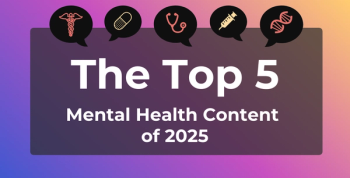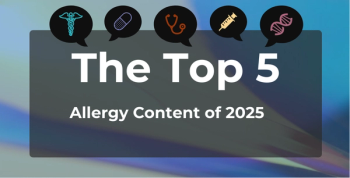
Driving Value via Outcomes-Based Pricing and EHR Interoperability: Tyler Sandahl, PharmD
Key Takeaways
- Outcomes-based pricing models can enhance cost-effectiveness and pass savings to patients for CAR T and bispecific therapies.
- Universal EMR systems are essential for seamless data sharing, improving patient access and continuity of care.
Tyler Sandahl, PharmD, a clinical pharmacist at Mayo Clinic, discussed the complexities of alternative payment models for chimeric antigen receptor T-cell and bispecific therapies and the need for improved data sharing in cancer care.
Tyler Sandahl, PharmD, clinical pharmacist at Mayo Clinic, emphasized that with the high cost of chimeric antigen receptor (CAR) T-cell therapies and bispecific antibodies, an outcomes-based pricing model holds significant promise. In this interview with The American Journal of Managed Care® (AJMC®), she advocates for a cost-benefit analysis approach to ensure patients are getting the most "bang for their buck." She believes this approach would help pass some of the savings directly to patients.
A major challenge in continuously evaluating the effectiveness of collaborative care models and ensuring seamless patient access, especially for complex therapies, is the lack of real-time data sharing between academic and community settings. Sandahl highlighted that the ideal scenario would be a universal electronic health record (EHR) system where all patient data are immediately accessible. She stressed the need for automated mechanisms for sharing updates to alleviate the burden on both patients and health care institutions and ensure better continuity of care.
This transcript was lightly edited for clarity.
Transcript
AJMC: Given the high upfront costs of CAR T and bispecific antibodies, what alternative payment models do you believe hold the most promise for these therapies?
Sandahl: I feel like there are pros and cons to everything and the cost of therapy in cancer care in general is skyrocketing all the time. I would like to see some outcomes based model where we are actually looking at cost-benefit analysis. We need to ask what is giving patients the best bang for their buck because it's great to talk about reimbursement for us, and if we're getting reimbursed fully, to see some of those savings passed on to the patients.
I think the cost of drugs and cost of care in general is a huge issue, and we're not going to solve it with any one reimbursement model, but some sort of outcomes-based pricing model and reimbursement model would be useful because then we're actually putting value on these therapies. We're not just paying huge costs for drugs that give patients maybe an extra 6 weeks compared with the previous therapies.
AJMC: What kind of data sharing mechanisms and feedback loops would you propose to establish between academic and community settings to continuously evaluate the effectiveness of the collaborative model, identify areas for improvement, and ultimately enhance patient access, continuity of care, and clinical outcomes for CAR T and bispecific therapies?
Sandahl: I think the ideal scenario would be to have everyone on the same EHR so you can log in and see records from outside.
It does get really challenging when you're sharing patients with community centers that are on a different EHR, and you can't see what's going on. You're left waiting to either hear from the patient, or the patient to come back for a follow-up visit and bring some of those records with them, or tell them what's going on, or waiting for their provider to reach out at time of progression. If they're having toxicities and they're not sure what to do, in terms of real-time updates, I feel like the ideal scenario is to have everyone on one system, or have systems that communicate with each other better, even if it is not the same EHR.
Mayo Clinic utilizes
I know for myself, I follow all of our bispecific patients for as long as they're on a bispecific therapy, whether they're treated with us or externally. Sometimes it's challenging when my little reminder list pops up alerting me it is time to check on someone, and I can't see any records, and I haven't seen anything for 6 months. I just say, "We will check on them again in 2 months and see where they're at or if any issues have popped up." I know other people have different systems and don't track their patients in that same way necessarily. It's definitely harder when they're not on the same EHR.
Newsletter
Stay ahead of policy, cost, and value—subscribe to AJMC for expert insights at the intersection of clinical care and health economics.







































